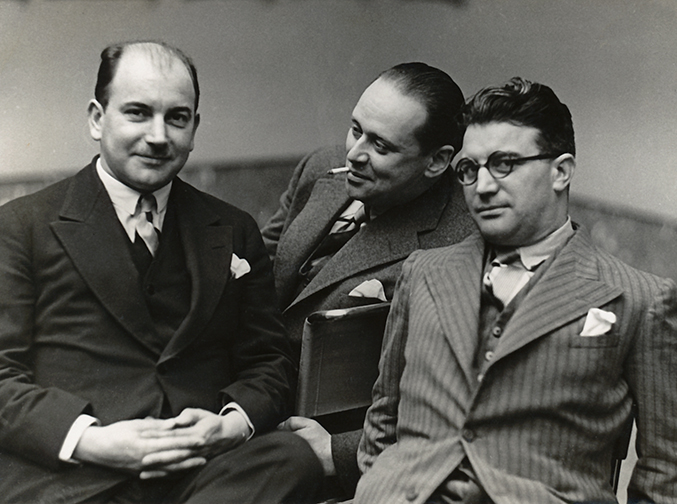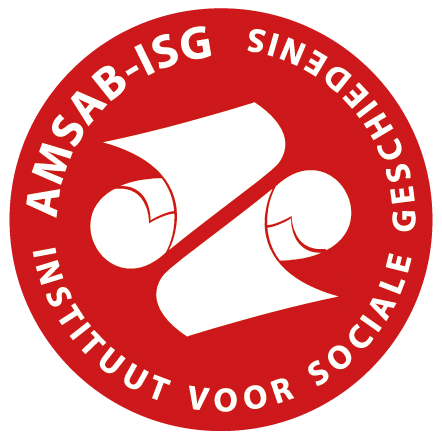Studio Stone, of Atelier Stone, is ontstaan uit de fotografische samenwerking van het paar gevormd door de Belgische Wilhelmine Camille Honorine Schammelhout (1892-1975), alias Cami Stone, en de Russische Aleksander Serge Steinsapir (1895-1940), alias Sasha Stone. Ze ontmoetten elkaar in Berlijn, waar ze in 1924 hun studio oprichtten. Hoewel de naam 'Stone' nu enigszins in de vergetelheid is geraakt, hoorde het paar destijds bij de beste fotografen van hun tijd. Journalisten en kroniekschrijvers zijn lovend over hun foto's en plaatsen ze vaak op één lijn met, of zelfs boven, collega-fotografen die gelden als belangrijke referenties in de geschiedenis van de fotografie, zoals André Kertész, Germaine Krull, László Moholy-Nagy, Albert Renger-Patzsch en zelfs Man Ray, om er maar een paar te noemen.
In 1920 vond de bruisende wereld van de fotografie een nieuwe expressievorm met de avant-gardistische stromingen 'Neues Sehen' ('Nieuwe Fotografie') en 'Neue Sachlichkeit' ('Nieuwe Zakelijkheid') die in Duitsland waren ontstaan. Het paar Stone maakt integraal deel uit van deze avant-garde, net als veel van hun kennissen in Berlijn, Parijs en Brussel. Ze zijn ruim vertegenwoordigd in de grote 'moderne' fototentoonstellingen van die periode. In 1929, tijdens de Internationale Ausstellung des Deutschen Werkbunds Film und Foto (FiFo) in Stuttgart, Zürich, Wenen en Berlijn, is Sasha een van de fotografen die de meeste foto's presenteerde op de tentoonstelling en in de bijbehorende publicatie. Voor de Internationale Tentoonstelling van Fotografie die in 1932 in het Paleis voor Schone Kunsten in Brussel wordt gehouden, vragen organisatoren Claude Spaak en E.L.T. Mesens aan Cami Stone om de Belgische afgevaardigde te zijn. Ook de plaats van het paar in de tentoonstelling is opmerkelijk, want ze huren een hele ruimte om hun foto's tentoon te stellen. Maar hun foto's worden ook gepubliceerd in veel tijdschriften en geïllustreerde kranten van die tijd.
In het begin van de jaren 1930 vertrekt het paar Stone uit de Duitse hoofdstad. Ze gaan naar Brussel, waar ze een nieuwe studio openen. Ze zullen er blijven werken tot hun scheiding in 1939. Ook daarna blijven ze fotograferen: Sasha onder de naam 'Sasha Stone, kunstfotograaf' en Cami als 'Cami Schammelhout'. Tijdens het bestaan van de studio worden de afdrukken geordend en geïdentificeerd. De meeste foto's krijgen een stempel op de achterkant met de tekst 'Atelier Stone', 'Studio Stone', 'Copyright Sasha Stone' of 'Copyright Cami Stone'. De stempels kunnen echter niet worden beschouwd als strikte toeschrijvingen aan Cami of Sasha. Het commerciële gebruik van de collectie, hun wens om niet alle beelden van een specifieke naam te voorzien, de opsplitsing van het geheel wanneer ze hun gezamenlijke activiteit stopzetten en de latere wijzigingen nopen immers tot voorzichtigheid. Sterker nog, het lijkt zinloos om te proberen een naam te zoeken op basis van stijl, zo nauw was hun artistieke samenwerking.
Wie in het werk van de Stones duikt, ontdekt een breed scala aan fotografische onderwerpen: architectuur, stedenbouw, naakt, fotografie van optredens, artistieke en politieke portretten en sociale reportages. Beide fotografen besteedden evenveel aandacht aan deze verschillende producties. De publicaties van het paar Stone betreffen reclame, industriële en artistieke fotografie en kinderportretten, zonder enig kwalitatief onderscheid. Na hun verhuizing naar Brussel blijven ze op dezelfde manier werken, rond dezelfde thema's als tijdens hun Berlijnse periode. Die consistentie is ook te zien in de technische en esthetische kwaliteit van hun foto's, waarbij het gebruik van het kikvors- of vogelperspectief, dynamische kadrering, scherpe onderwerpen en aandacht voor licht hun werk kenmerken.





